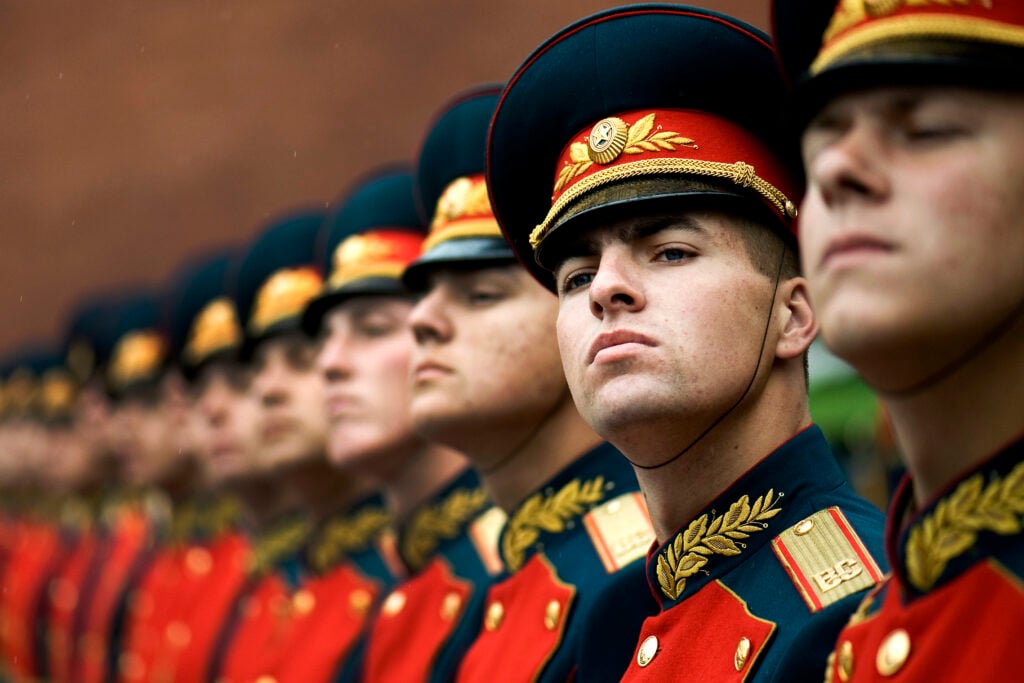SYDNEY J. FREEDBERG JR.

WASHINGTON: “For both Russia and China, they lag far behind where we are in terms of an NCO corps,” Army intelligence analyst Ian Sullivan told me. “[But] the answer for both Russia and China might not be to build an NCO corps that is similar to the United States…. What if their way of war doesn’t necessarily require it?”
That’s an answer that “doesn’t necessarily resonate” for a lot of US leaders, brought up in a Western military tradition that absolutely depends on non-commissioned officers, Sullivan acknowledged in an interview: “We couldn’t go to war without ’em.” But it’s dangerous to mirror-image an adversary, and China and Russia have taken a very different approach to modern conflict, said Sullivan, the deputy intelligence office (G-2) for US Army Training & Doctrine Command (TRADOC). It’s an approach that could make it easier and less expensive for our competitors to professionalize their militaries than US observers might assume.
Both Russia and China have focused on their commissioned officer corps first and foremost, he told me, although they’ve also invested in improvements on the NCO side. Both have focused on long-range firepower, cyber warfare, and disinformation campaigns under centralized control. That contrasts sharply with the more bottom-up, NCO-led approach preferred by Western militaries, both in open warfare and in peacetime competition.

Russian military honor guard.
That peacetime competition short of war – often called the “grey zone” – is particularly revealing. Russia and China can skillfully apply pressure to countries they wish to influence, coordinating diplomacy, cyber, military, and economic means at a high level. But at the working level, they don’t have the West’s small, dynamic teams of advisors – often led by NCOs – that get face-to-face with ordinary soldiers to build relationships.
“They do joint training, and they have interactions, but it’s not anywhere near the same level we do when you talk about …getting down and working at the soldier level,” Sullivan told me. “That’s… a critical advantage that we have.”
A similar difference in emphasis would show up in open conflict, Sullivan argued. US and Western ground tactics emphasize maneuver warfare, with small teams seizing opportunities to work their way forward and take apart the enemy’s defenses; firepower is important, but its primary role is to blast open gaps for maneuver units to advance through. Russia and China emphasize firepower, disrupting and destroying the enemy at the longest possible distance; maneuver is important, but primarily for setting up advantageous positions for long-range fires.
“They’re both very heavy on fires to prevent us from maneuvering,” an approach often called anti-access/area denial warfare, Sullivan said. “We win by maneuver, they win by fires, [and] the fires fight may not necessarily require… the kind of NCO corps that we have, the thinking, educated, dynamic NCO corps.”
This is arguably an approach that goes back to Russian reliance on massive, centrally planned artillery barrages in the Second World War. The 21st century equivalent is arguably China’s Strategic Support Force, a centralized top-level command for space and cyber/network/information operations.
Russia and China, of course, are not identical. Russia still relies heavily on short-term conscripts, poorly motivated and often badly hazed, although it has a growing corps of so-called contractor soldiers, who are volunteers. China, by contrast, has such wide economic disparities that volunteering for military service remains attractive to a wide swath of the population. “They generally get enough people who voluntarily walk up and say I want to be in the PLA,” Sullivan said. “If you’re a kid growing up in some farm village…. it’s the ticket to broader opportunity within Chinese society.”
That means China has readier access to talent than Russia – another reason why, in the long run, they’re the more formidable threat.
No comments:
Post a Comment